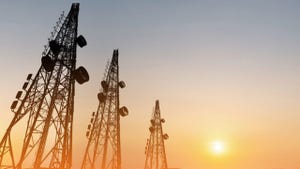SKT and Nokia team up on fibre sensing tech to track environmental changes
SKT and Nokia have signed an MOU to develop 'fibre sensing’ – described as a wired network AI technology that can track the impact of weather, earthquakes, and construction on optical cables.
August 13, 2024

When transmitting data through an optical cable, the ‘phase’ of the cable changes sensitively depending on the surrounding environment and by monitoring this change, damage to the wired network or impacts to the surrounding area can be detected, we’re told.
What the firms plan to do with this is detect earthquakes, strong winds, heavy rain, ocean currents and unexpected situations such as shortening of lines by excavators or road construction, and stabilise the wired network in advance.
SKT plans to introduce the tech to its wired network and establish ‘an intelligent preemptive response system’ to minimise damage caused by line breaks at construction sites. It says it expects this will enable the provision of uninterrupted services by preventing service disruptions caused by sudden accidents.
From this, they plan to accumulate machine learning-based verification data on SKT’s commercial network in the pursuit of commercialising this fibre sensing tech in Korea by the end of the year.
It can also be used to gather insights using existing wired network line equipment, and while some existing wired network monitoring technologies have limitations in the distance they can detect, fibre sensing has no such distance restrictions meaning it can be applied quickly to major backbone networks, claims the release.
“We have combined the capabilities of both companies to quickly internalize new AI-based technologies,” said Ryu Jeong-hwan, head of SK Telecom’s infrastructure strategy technology CT, pictured above right. “We will continue to strive to secure advanced technological capabilities to prepare for the AI era, where advanced wired network infrastructure is essential.”
John Harrington, President of Nokia Asia Pacific, pictured above left added: “We hope to apply Nokia sensing technology to AI-based automated networks starting with this MOU. We will work together to provide stable services by detecting and responding to on-site situations in advance.”
Last week Verizon announced it had deployed AI and machine learning in an effort to lower the chances of someone unwittingly cutting through one of its cables via trawling through more than 10 million 811 dig requests – 811 being the phone number that homeowners and professional builders are asked to call several days ahead of undertaking any digging in the US.
About the Author
You May Also Like


.png?width=300&auto=webp&quality=80&disable=upscale)







.png?width=300&auto=webp&quality=80&disable=upscale)


_1.jpg?width=300&auto=webp&quality=80&disable=upscale)